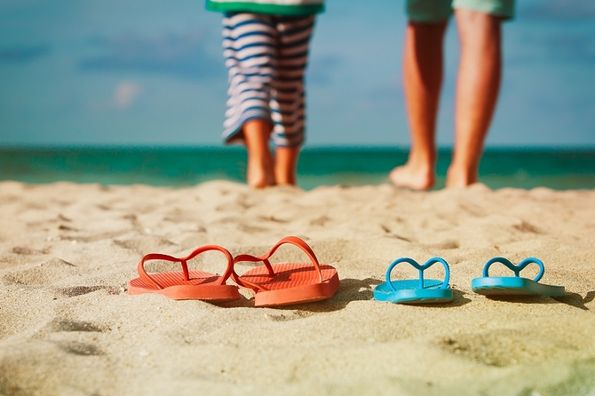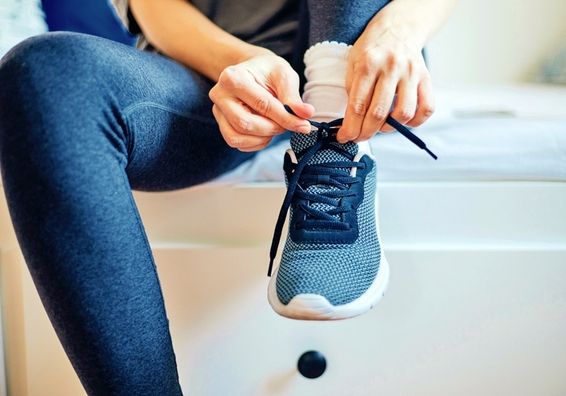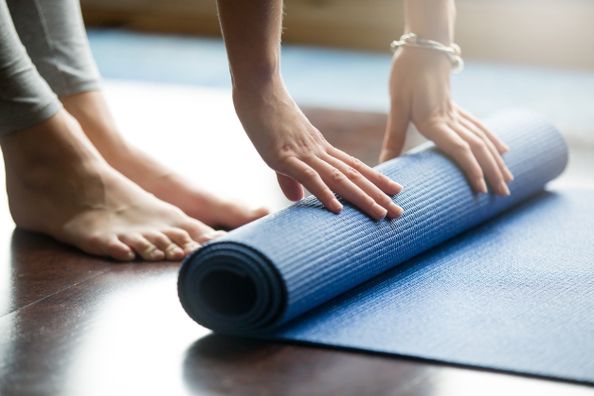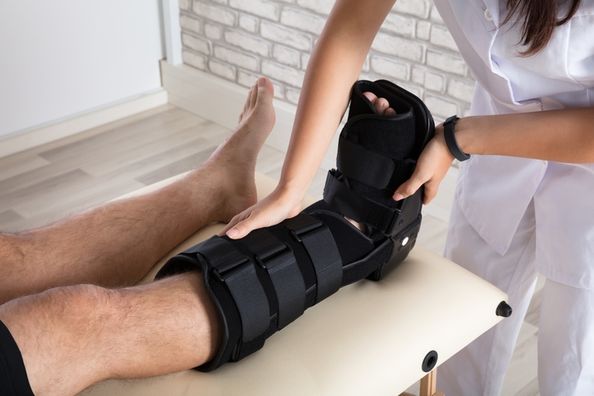Summer is the season for sunshine, spending days at the beach, and having picnics in the park. But did you know that it’s also the season for foot pain?
Throughout the summer, it’s common to have certain types of foot pain and to develop a condition called plantar fasciitis. It’s even more common near the end of the summer, after spending months out and about on your feet. In fact, so many people complain of foot pain as summer draws to a close that podiatrists have deemed late summer and early fall “Plantar Fasciitis Season.”
First Things First: The Fasciitis Facts
Plantar fasciitis (pronounced “fa-shee-AI-tuhs”) is a foot condition that occurs when the plantar fascia (a thick band of tissue that runs from the base of the heel bone to the ball of the foot) becomes inflamed. It is extremely common – in the US, more than 2 million people are treated for plantar fasciitis every year. If you have heel pain, plantar fasciitis is very likely to be the culprit since it’s the leading cause of heel pain.
The telltale sign of plantar fasciitis is a stabbing pain in the bottom of your foot, right near your heel. The pain tends to be worse when taking your first steps after waking up. It can also occur when you get up from sitting or if you’ve been standing for a long time.
But plantar fasciitis symptoms don’t start and stop with heel pain. You might also have stiffness, swelling around your heel, pain in the arch of your first, or a tight Achilles tendon (the tendon that connects your calf muscles to your heel bone).
If persistent heel pain is affecting your daily life, know that relief is possible. Our experienced podiatrists at Duly Health and Care are ready to listen to your concerns, answer your questions, and work with you to find the best treatment option. Don’t let foot pain hold you back; schedule your appointment today.
Find a podiatrist near you >
What Causes Plantar Fasciitis to Be More Common in the Summer?
Plantar fasciitis can happen year-round, but it’s especially common during the warmer months. There are two main reasons:
Reason #1: Your Footwear
It might come down to your shoes (or lack thereof). Flip flops are a summer shoe staple. And since they can easily get sandy or dirty, it can be tempting to grab a cheap pair, wear them out all summer, and replace them the next year. It can be just as tempting to put aside shoes altogether and let your toes enjoy the grass and sand.
However, walking around barefoot or in flip flops can take a toll on your feet. Wearing flip flops or no shoes at all usually means not getting enough arch support. Pressure doesn’t get evenly distributed across the foot, which puts strain on the plantar fascia and can lead to plantar fasciitis.
You don’t necessarily need to say goodbye to summer sandals. Limit how much time you spend in sandals or flip flops, and pay close attention when choosing a pair.

Reason #2: Increased Physical Activity
As the weather becomes warmer, couch potato season often comes to an end. People tend to be more physically active during the summer than they are during colder months.
While that uptick in physical activity is great for your overall health, it can come at a cost to your feet. Spending too much time on your feet, especially if you’re doing activities like walking or running that involve repetitive movements, can translate into more stress on your heels and weaker tendons. This can cause inflammation, prompting the start of plantar fasciitis symptoms.
If you’re worried about plantar fasciitis, don’t head back to the couch just yet. There are plenty of ways to reduce your risk. Make sure to stretch before and after physical activity, wear the right shoes, and rest after intense activity so your feet have time to recovery. Replace your sneakers every six months or once you’ve put 300 to 500 miles on them (whichever comes first).
Also read: Variety and Recovery: Keys to Exercise Success
What Else Causes Plantar Fasciitis?
Whether the weather be boiling or freezing, all it takes is damage or irritation to your plantar fascia to get plantar fasciitis. Some of the risk factors include:
- Playing a sport or exercising without warming up or stretching
- Exercising or working on a hard surface, such as a sidewalk or warehouse floor
- Standing for too long
- Starting a new activity
- Obesity
- Being 40 – 60 years old
- Tight calf muscles
- Flat feet or naturally high arches
- Medical conditions like certain types of arthritis
How to Prevent Plantar Fasciitis
In addition to choosing the right sandals and paying extra attention to your feet when exercising, there are other ways to reduce your risk of developing plantar fasciitis:
- Avoid walking barefoot on hard surfaces.
- Do daily exercises to strengthen your arch muscles and to keep your calf muscles flexible.
- Maintain a healthy weight.
- When wearing dress shoes, go for low heels. Stilettos and high heels force your foot into an unnatural arch, while flats don’t provide enough support to your plantar fascia.
Also read: Fitness for Your Feet
Treatment for Plantar Fasciitis
You can’t always prevent plantar fasciitis, but it’s not all bad news. Most people with plantar fasciitis recover from it, and the vast majority do so with simple treatment methods.
Some of the most common at-home treatments include:
- Taking a break from sports or other activities that caused your plantar fasciitis for at least a week
- Over-the-counter medications that decrease pain and inflammation
- Icing your foot for 10 to 15 minutes, two times a day
- Stretching exercises
In some cases, you may need to go a little further with treatment. For instance, your provider may recommend:
- Physical therapy
- Splints or orthotics (custom-fitted arch supports)
- Using a cane, crutches, or a walking boot
- Injections of corticosteroids (anti-inflammatory medications)
It’s rare that you will need surgery for plantar fasciitis. But if the pain is severe and other treatments aren’t working, you may need a procedure to detach the plantar fascia from your heel bone.
Also read: Is Heel Pain Keeping You Off Your Feet?
Pay attention to your feet and see your provider if you have persistent heel pain. With the right care, you have a good chance of “heel”-ing from plantar fasciitis.
Ready to get back to enjoying summer activities without foot pain? At Duly Health and Care, our podiatry specialists offer comprehensive plantar fasciitis treatment options tailored to your needs. From conservative care to advanced solutions, we’ll help you find relief and get back to doing what you love.
Find a podiatrist near you >
Health Topics:





